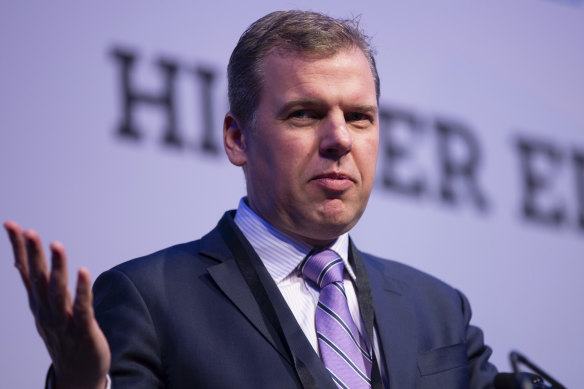By Shane Wright and Millie Muroi
Australia’s retail recession is tipped to continue until Christmas as signs grow inflation pressures are being squeezed out of the economy, led by steep falls in electricity and petrol prices.
Annual inflation fell to 3.5 per cent in July, the Australian Bureau of Statistics reported, down from 3.8 per cent in June which itself was down from 4 per cent in May.
The Reserve Bank has made clear it can start cutting official interest rates, which have been at 4.35 per cent since November, before inflation is within its 2-3 per cent target band. Financial markets expect the RBA to cut rates by a quarter percentage point at its December meeting.
Electricity prices fell by 6.4 per cent last month to be down by 5.1 per cent over the past year. It’s the lowest electricity inflation rate since October 2021 with analysts expecting it to fall even further as state and territory price subsidies start flowing to consumers.
Petrol prices fell 2.6 per cent last month, taking the annual rate down to 4 per cent. Since July, international and wholesale prices have fallen further while the Australian dollar has strengthened, suggesting petrol inflation will ease again in August.
Treasurer Jim Chalmers said the figures suggested “encouraging progress” to bring down inflation which peaked at almost 8 per cent in late 2022.
He defended the use of subsidies to help bring down electricity prices after criticism from the Coalition.
“I think anybody who describes helping people with their energy bills as artificial is horrendously out of touch. There’s nothing artificial about helping people with their electricity bills,” he said.
Prices are easing in other sectors. Prices for milk, ice-cream and cheese have fallen by 0.2 per cent over the past year. In early 2023, they were climbing by almost 16 per cent.
In a sign of softer consumer conditions, prices for women’s footwear fell 3.1 per cent, while there were lower-than-expected increases in prices for clothes.
And in positive news for the Reserve Bank, underlying inflation has started to ease while the rate of increase in prices on goods is at its lowest level in three years. Some economists believe overall inflation could drop below 3 per cent by year’s end.
But there continue to be price pressures.
Housing costs were up 4 per cent in the 12 months to July, down from 5.5 per cent in June. Rents were up by 6.9 per cent over the year, a step down from the 7.1 per cent annual rate recorded in June.
Tobacco prices, which are affected by government excise rates, have climbed by 13.9 per cent over the past 12 months.
Poor growing conditions for key fruit and vegetables such as strawberries, grapes and broccoli, flowed through to supermarkets, with the annual inflation rate jumping from 3.6 per cent to 7.5 per cent.
Commonwealth Bank economist Stephen Wu said disinflationary pressures were now spreading, and not just because of government intervention.
“The number of items in the CPI basket with annual inflation below 2 per cent continued to rise and now outnumbers the number of items with prices growing above the RBA’s inflation target band, which continues to fall,” he said.
“Measures of core inflation also eased in the month. In other words, disinflation is not occurring purely because of government rebates. The news is good.”
But the news is not good for the retail sector which has borne the brunt of higher inflation and Reserve Bank interest rates to tame price pressures.

Deloitte partner David Rumbens says Australia’s retail recession is continuing.Credit: Attila Csaszar
Releasing his latest retail outlook report, Deloitte Access Economics partner David Rumbens said the nation’s retail sector had been in recession for the past 18 months.
Spending per person had fallen for the past two years and is now 2.5 per cent lower than June last year and 6.3 per cent lower than in mid-2022. The rest of the year would be tough, he said, but inflation was likely to ease further which would help lift retail spending next year and into 2026.
“The period from now to Christmas is still expected to be a difficult one for retailers, but perhaps less of a slog than it has been,” he said.
“A tight focus on cost control, and periodic swing to discounting, remains the mantra. Technology investment is being further explored to drive efficiencies, with retailers’ hiring intentions dropping back.”
It’s not just the retail sector continuing to struggle.
Figures from the bureau on Wednesday showed the value of residential construction completed across the country during the three months to June fell by 0.1 per cent to be 2.9 per cent lower over the past year.
The drop will detract from next week’s national accounts which markets are expecting to show the economy grew by just 0.3 per cent in the June quarter. That would be after growth of just 0.1 per cent through the first three months of the year.
Cut through the noise of federal politics with news, views and expert analysis. Subscribers can sign up to our weekly Inside Politics newsletter.